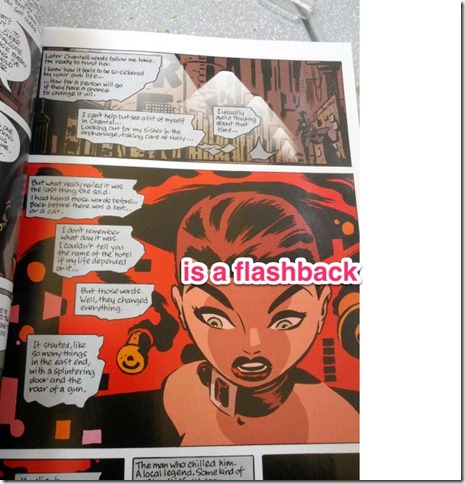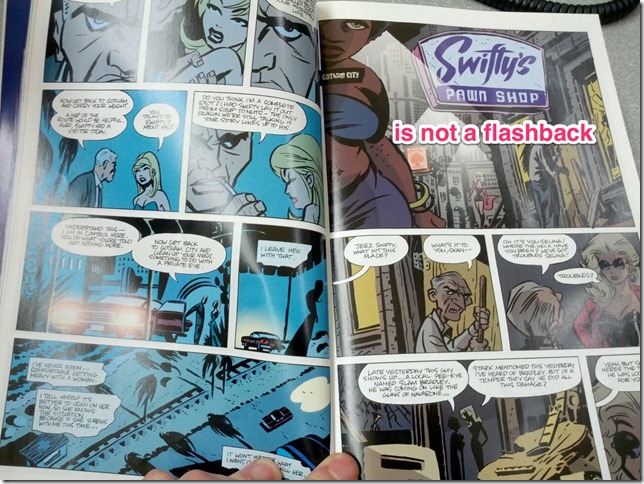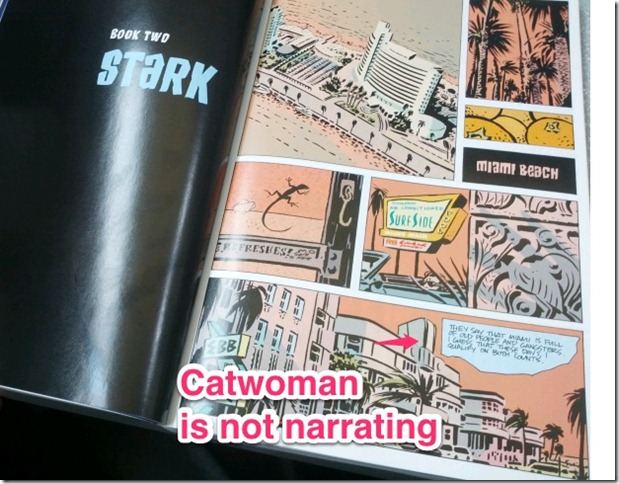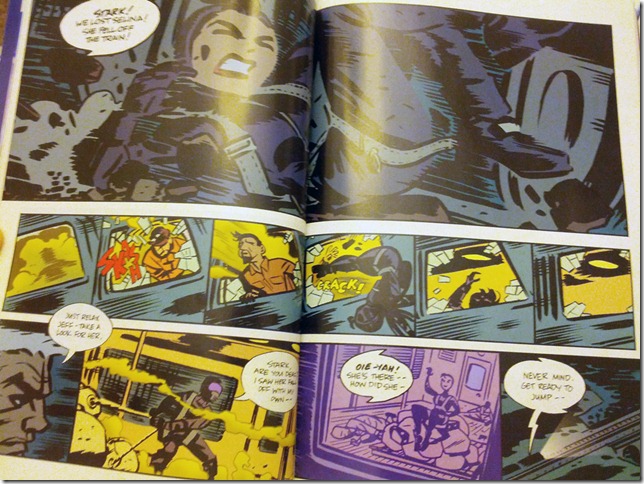Storytellers: Ed Brubaker and Darwyn Cooke
Publisher: DC Comics
Year of Publication: 2002- 2003
Page Count: Collects Catwoman 1-4 (Later Collected in the bigger trade Catwoman Volume 1: Trail of the Catwoman)
What I learned about writing/storytelling:
The story begins like many Batman stories, with a mysterious serial killer serial killing someone. The audience immediately wonders: who is this mystery killer, and will Batman/Batgirl/Batwoman/Robin/Nightwing/Batwing/Catwoman/whomever be able to stop this killer once they learn about them and fight them?
This works fine, and starts the book as a page turner. After the two earlier talking heads heavy non- Catwoman “Catwoman” stories it was certainly a breath of fresh air.
The comic has Catoman reevaluating her identity. She soon meets an old friend and is soon told about the serial killer targeting prostitutes. The police and Batman don’t care all that much about it. (The police don’t consider prostitutes human and Batman considers them criminals). It’s up to Catwoman to save the day because there’s nobody else!
This is good use of pulp tropes. Give the hero something to protect, give them a villain to fight against. Tell us why only they can save the day. The villain turns out to be powerful, it looks like Catwoman will lose but then she wins!
What I learned about art/storytelling:
I’m a little uncertain about the idea of reading comics specifically to learn storytelling tools to add to my storytelling toolbox, because I can see tools in a book, but they aren’t necessarily tools I would want to use. I like some of my storytelling biases, is what I’m saying.That said, here’s a tool, for a two page spread, you force the reader to turn the book over to the side:
Not my thing. But it is a “tool” and presumably one the creative team liked.
I like the art better than in the earlier two Catwoman stories. I’m not sure why that is, but it seems like Cooke is going for something a bit different, maybe more mainstream. Or… could it be because he’s no longer inking himself? (Mike Allfred is credited as inker here.)
Cooke uses four tiers as the basic assumption of how to build a page, which seems to work a lot better than the three tier stuff in the earlier stories. The high panel count no longer bothers me like it did before, in part because it looks better and in part because its more of a page turner stort of story. This is from that boring, earlier detective story:

Talking heads. Boring characters talking about boring things. This is from the Catwoman story:
I like that page. It’s whimsical, its fun. Selina is just going for a jog for the heck of it, sans costume. It helps the artist is working with material that is more interesting than a detective walking around talking to people. The word count is lower and not drowning the art.
I like this page layout which has two big panels on a 6 panel page:

It gives room for two bigger establishing images.
Recommendation: B
Notes/Reviews/Synopsis:
I already covered the plot above. It’s good. It’s fun. Its possibly not world changing, but compared to his colleagues, I suspect Brubaker’s scripts are kicking ass. The only part that creaks is when there’s this “Heroes don’t kill” thing at the end, where Catwoman doesn’t kill the serial killer and Batman and his friend are all like “You’re such a good person for not killing him the serial killer.”
Uh, yeah. Do people in the real world really believe this? Cops and soldiers are expected to kill, if circumstances arise and are considered by many to be “heroes.” The United States still has a death penalty in some areas. And the superhero genre isn’t exactly a place for thoughtful reflection on the use of power.
Remember when Selina killed Bane in The Dark Knight Rises? That was badass!






